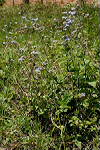
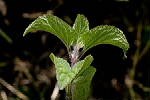
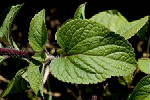
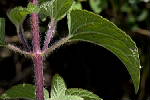

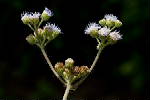


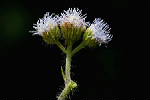
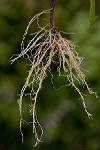
Botany Biology Phenology Ecology Distribution Agricultural importance Cultural control Chemical control
| Description : | Terrestrial, annual, erect herb, up to 120 cm tall. Taproot white or brown. Stem rounded, solid, hairy. Stipules absent. Leaves simple, not divided or lobed, opposite, stalked, ovate, hairy or not on both sides, margin coarsely dentate, apex acute, base rounded or truncate, pinnately veined. Flowers bisexual, grouped together in a terminal head, consisting of tubular flowers only, sessile, white or blue, petals 5. Fruit an achene, pappus present. |